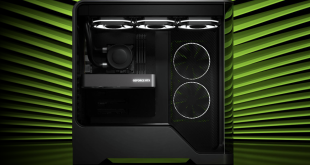
The ASUS R9 270X Direct CU II TOP ships in a large box featuring red claw marks top right.

Accessories include a power converter cable, Crossfire connector and software disc.


The ASUS R9 270x dual slot solution puts the AMD reference version to shame. This card has two black fans and a metal cooler which attaches to the black PCB underneath.

The Asus R9 270X is Crossfire capable in a two way configuration.

The card takes power from two 6 pin PCI E connectors, the same as the reference design.

The I/O plate has a DVI-I and DVI-D connector, alongside a full sized HDMI and DisplayPort.
It is widely known that AMD Radeon HD 7xxx parts (and earlier) currently can support a maximum of 2 HDMI/DVI displays, and the rest must be DisplayPort connections (or active DisplayPort adapters).
AMD Radeon R9 Series can now support up to three HDMI/DVI displays for use with AMD Eyefinity technology. A set of displays which support identical timings is required to enable this feature. The display clocks and timing for this feature are configured at boot time. As such, display hot‐plugging is not supported for the third HDMI/DVI connection.
A reboot is required to enable three HDMI/DVI displays.DisplayPort outputs are supported in addition to the three HDMI/DVI displays (up to 6 in total).


The AMD reference R9 270X uses SK Hynix memory, but the ASUS R9 270X is using 2GB of Elpida GDDR5 memory.

The R270X is built on the 28nm process. The core on this ASUS board is clocked 70mhz higher than the reference design at 1,120mhz and it has 32 ROPs, 80 TMU's and 1,280 Stream Processors. The 2GB of GDDR5 is connected via a 256 bit memory interface. The memory is clocked at 1,400mhz (5.6Gbps effective).
 KitGuru KitGuru.net – Tech News | Hardware News | Hardware Reviews | IOS | Mobile | Gaming | Graphics Cards
KitGuru KitGuru.net – Tech News | Hardware News | Hardware Reviews | IOS | Mobile | Gaming | Graphics Cards



Uhm… Power Consumption-lower dBa less painful on ears ? oh well i understand its a typo error 🙂